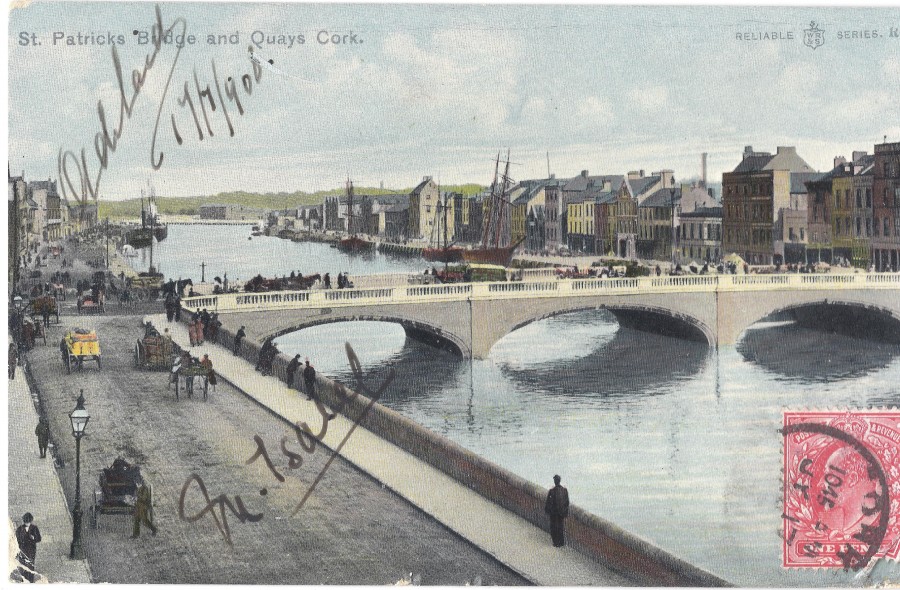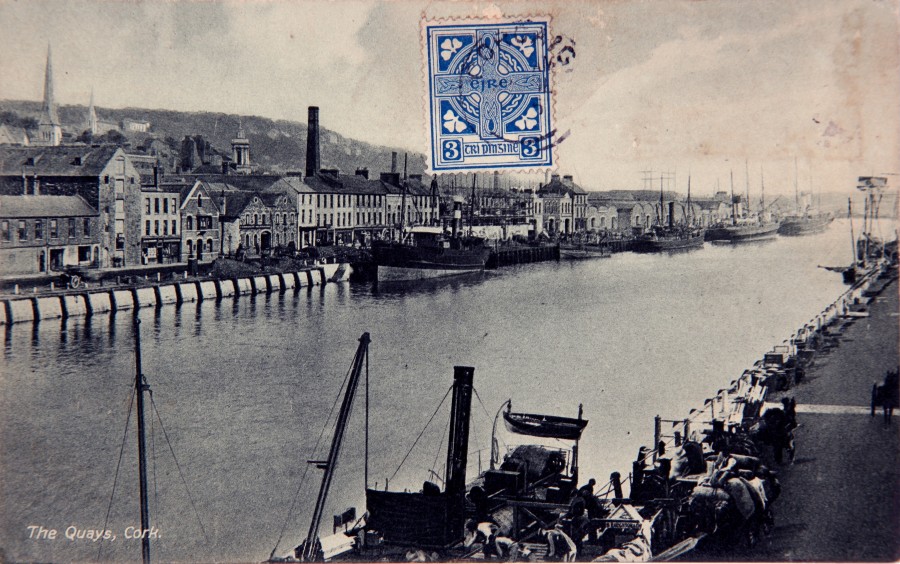Kieran’s Our City, Our Town Article,
Cork Independent, 2 August 2018
Stories from 1918: The Strikes of the Dockers
This week one hundred years ago on Saturday 27 July 1918 circa 250 members of the Cork Branch of the National Union of Dock Labourer struck work following the failure of negotiations in relation to calls of increased wages and fixed working hours. Workers had been engaged in the different levels of work connected with the unloading and loading of steamers. About 30 men handlers of the green timber traffic, and members of the same Union, were also affected at first. However, a satisfactory settlement of wage and time terms was brought about, and the men resumed work. The settlement was £3 per week and a nine-hour day.
The Shipping Companies issued a public statement, which was published in the Cork Examiner. It referenced a letter received from the Union in January 1918 looking for a demand for an increase in wages. The companies replied that it was not possible for them to entertain an application for any increase but a request was made to the government to sanction certain increases in pay rates. In May 1918 the government had sanctioned certain increases in workers’ pay. The information was relayed by the Cork shipping companies to the men’s Union Headquarters in Liverpool that they would be prepared to discuss with their representative, if he was sent over. They were unable as the Union was in talks with the Ministry of Labour on other but similar files elsewhere in England.
The Union Representatives in England argued that a uniform rate at all Irish ports was crucial. However, the Ministry argued that the volume of traffic and regularity of work varied so widely and wished for separate consideration for each port. The weekly dockers in Waterford were paid slightly higher but got no overtime unless they worked on Saturday night or Sunday, while the daily labourers and carmen were paid higher in Cork, and all classes of workmen received overtime on every day that was worked.
In a letter by John Sutton, Secretary of the Cork Branch of National Union of Dock Labourers, and published in the Cork Examiner on 29 July, it highlighted that the demand was £2 5d 0d per week. The men gave the obligatory notice of eight days. Mr Sutton relayed that the lowest paid docker in Waterford and Derry received £2 7s 6d and £2 10s respectively and a nine-hour day. Men in Cork received from £1 17s 6d to £2 4s 6d with a bonus included but with a ten-hour day.
A book by John W Boyle entitled The Irish Labour Movement in the Nineteenth Century (1988) delves into the archives of the National Union of Docker Labourers (which survive in Kew Archives in London). The National Union of Dock Labourers was established in Glasgow in February 1889. It was part of the mass mobilisation of semi-skilled workers and labourers into general large unions. The Gas Workers and General Labourers’ Union and the National Amalgamated Union of Labour also emerged in the UK. In 1894 the Irish Trade Union Congress was set up by the two trade councils of Belfast and Dublin.
By May 1889, the National Union of Dock Labourers (NUDL) had a branch in Belfast. In a short time, the branch had four hundred members out of the two thousand men eligible in the Port of Belfast. By the middle of 1891, the NUDL had branches in fifteen Irish ports and paid up membership dues of circa 2,000 men. Enrolment continued apace when employer counteroffensives were successful. Wages in Irish Ports, which had been as low as ten shillings per week, with men working from 6am to 9pm for two shillings, had increased substantially by amounts ranging up to 30 percent.
The Irish Home Rule Campaign caused a rift between Protestant Belfast members and Catholic south of Ireland members. In 1895, there remained four branches – Dublin, Derry, Drogheda and Cork. The Dublin branch ceased operation in 1900. Amidst these years, the Union organiser James Larkin pushed for re-establishment of branches in 1907 and 1908. However, the finding of Larkin’s use of funds from re-organised branches such as Cork in an effort to fight ongoing employer offensive campaigns led to his jailing for a year. His subsequent release led him to establish the Irish Transport and General Workers’ Union (ITGWU).
As for the NUDL, it transferred its headquarters to Liverpool and within a few short years was most closely associated with Merseyside. The union retained a strong presence in a number of Scottish ports but closed its Glasgow branch in 1910 and was replaced locally by the Scottish Union of Dock Labourers, which was formed during the seamen’s and docker’s of 1911. The Union represented 55,000 members.
The offices of the Cork Branch of National Union of Dock Labourers were located at 4 Merchant’s Quay. Apart from the 1918 summer strike and another one a year earlier in the summer of 1917, very little historical information has survived of the Cork Branch and its activities in the 1910s, which at this time would have been affiliated the ITGWU. In addition, large-scale publications on trade unionism in early twentieth century Cork remain to be published. In late 1910s Cork, the Cork branch of the NUDL with its 250 members were a formidable force on the docks of Cork City, that plus the presence of the smaller Stevedore union groupings.
Captions:
957a. Postcard view from Camden Quay of St Patrick’s Bridge and Merchants’ Quay, 1908 (source: Cork City Museum)
957b. Postcard view from Merchants’ Quay of St Patrick’s Quay, c.1900 (source: Cork City Museum)

